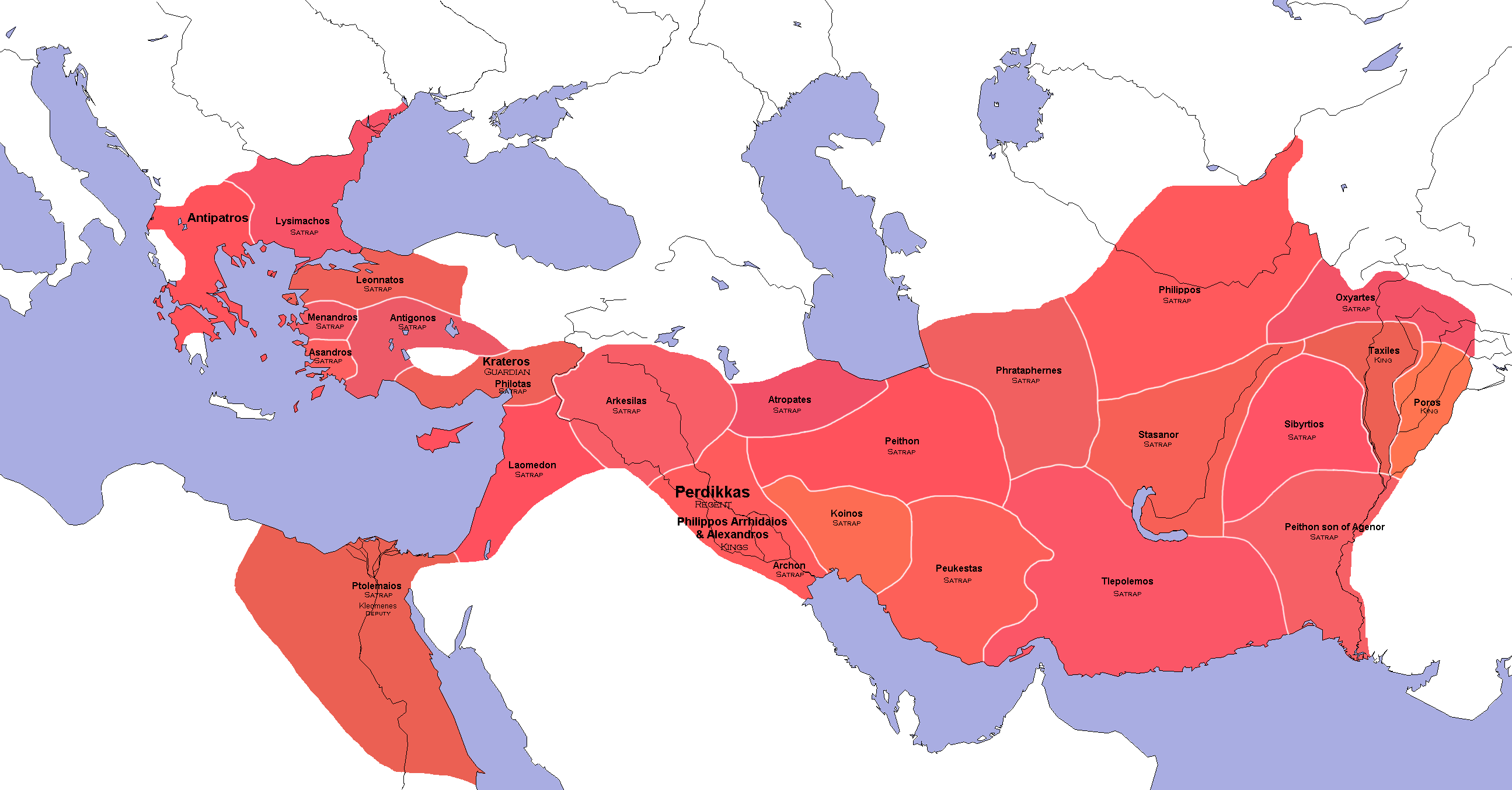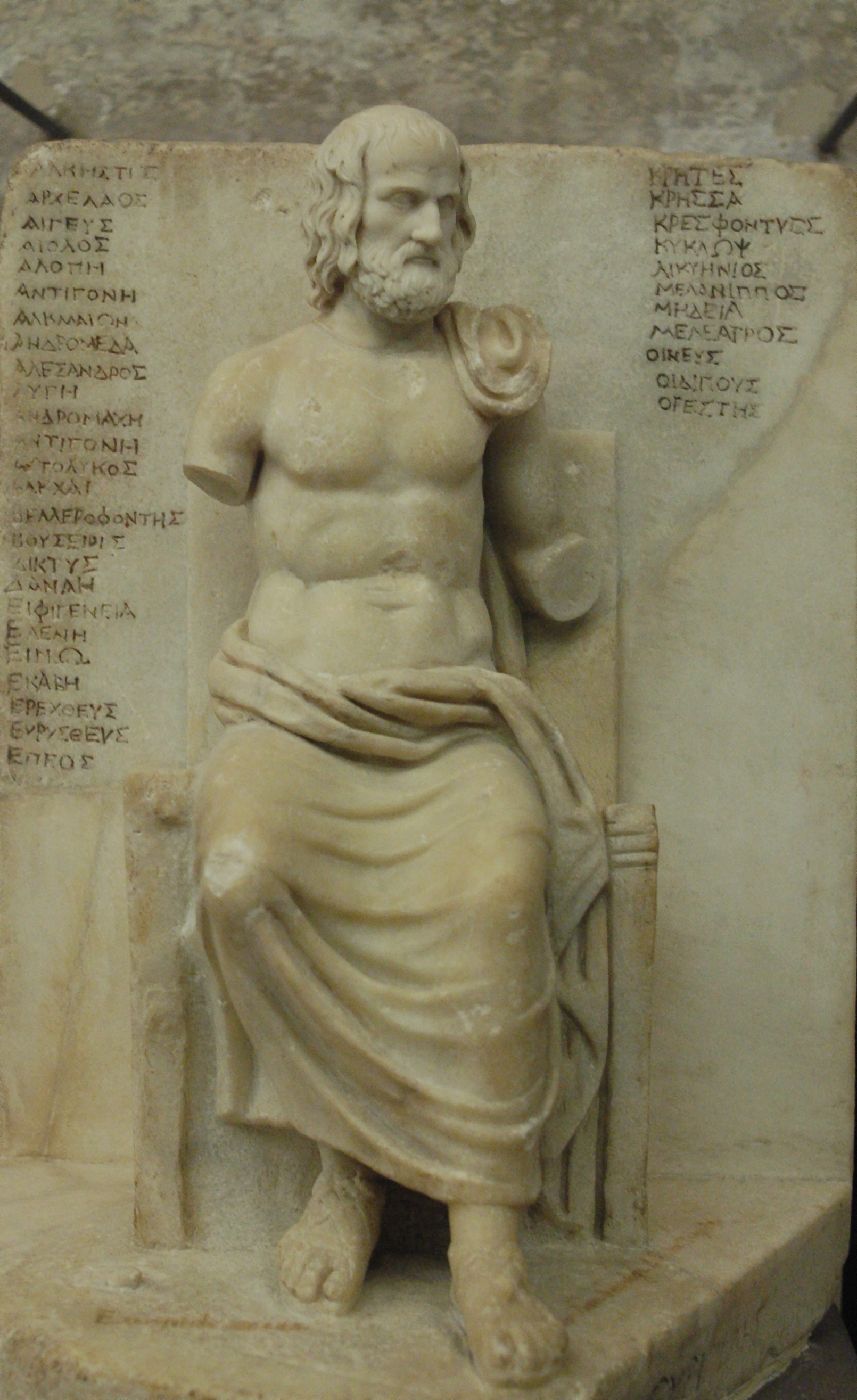|
Gargettos
Gargettus or Gargettos ( grc, Γαργηττός) was a deme of ancient Attica. From the mythical story of the war of the Pallantidae against Theseus, we learn that the demoi of Pallene, Gargettus, and Agnus were adjacent. When Pallas was marching from Sphettus in the Mesogaea against Athens, he placed a body of his troops in ambush at Gargettus, under the command of his two sons, who were ordered, as soon as he was engaged with the army of Theseus, to march rapidly upon Athens and take the city by surprise, But the stratagem was revealed to Theseus by Leos of Agnus, the herald of Pallas; whereupon Theseus cut to pieces the troops at Gargettus. In consequence of this a lasting enmity followed between the inhabitants of Pallene and Agnus. The road from Sphettus to Athens passed through the opening between Mount Pentelicus and Mount Hymettus. A monastery there by the name of Ieraka (or Hieraka) is the site of Gargettus. The proximity of Pallene and Gargettus is indicated by ... [...More Info...] [...Related Items...] OR: [Wikipedia] [Google] [Baidu] |
Deme
In Ancient Greece, a deme or ( grc, δῆμος, plural: demoi, δημοι) was a suburb or a subdivision of Athens and other city-states. Demes as simple subdivisions of land in the countryside seem to have existed in the 6th century BC and earlier, but did not acquire particular significance until the reforms of Cleisthenes in 508 BC. In those reforms, enrollment in the citizen-lists of a deme became the requirement for citizenship; prior to that time, citizenship had been based on membership in a phratry, or family group. At this same time, demes were established in the main city of Athens itself, where they had not previously existed; in all, at the end of Cleisthenes' reforms, Athens was divided into 139 demes, to which one can be added Berenikidai (established in 224/223 BC), Apollonieis (201/200 BC), and Antinoeis (added in 126/127). The establishment of demes as the fundamental units of the state weakened the ''gene'', or aristocratic family groups, that had dominated t ... [...More Info...] [...Related Items...] OR: [Wikipedia] [Google] [Baidu] |
Populated Places In Ancient Attica
Population typically refers to the number of people in a single area, whether it be a city or town, region, country, continent, or the world. Governments typically quantify the size of the resident population within their jurisdiction using a census, a process of collecting, analysing, compiling, and publishing data regarding a population. Perspectives of various disciplines Social sciences In sociology and population geography, population refers to a group of human beings with some predefined criterion in common, such as location, race, ethnicity, nationality, or religion. Demography is a social science which entails the statistical study of populations. Ecology In ecology, a population is a group of organisms of the same species who inhabit the same particular geographical area and are capable of interbreeding. The area of a sexual population is the area where inter-breeding is possible between any pair within the area and more probable than cross-breeding with ind ... [...More Info...] [...Related Items...] OR: [Wikipedia] [Google] [Baidu] |
Epicurus
Epicurus (; grc-gre, Ἐπίκουρος ; 341–270 BC) was an ancient Greek philosopher and sage who founded Epicureanism, a highly influential school of philosophy. He was born on the Greek island of Samos to Athenian parents. Influenced by Democritus, Aristippus, Pyrrho, and possibly the Cynics, he turned against the Platonism of his day and established his own school, known as "the Garden", in Athens. Epicurus and his followers were known for eating simple meals and discussing a wide range of philosophical subjects. He openly allowed women and slaves to join the school as a matter of policy. Of the over 300 works said to have been written by Epicurus about various subjects, the vast majority have been destroyed. Only three letters written by him—the letters to ''Menoeceus'', ''Pythocles'', and ''Herodotus''—and two collections of quotes—the ''Principal Doctrines'' and the ''Vatican Sayings''—have survived intact, along with a few fragments of his other writing ... [...More Info...] [...Related Items...] OR: [Wikipedia] [Google] [Baidu] |
Hellenistic Philosophy
Hellenistic philosophy is a time-frame for Western philosophy and Ancient Greek philosophy corresponding to the Hellenistic period. It is purely external and encompasses disparate intellectual content. There is no single philosophical school or current that is either representative or dominating for the period. Background The classical period in Ancient Greek philosophy had begun with Socrates (c. 470–399 BC), whose student Plato had taught Aristotle, who, in turn, had tutored Alexander. The period began with the death of Alexander in 323 BC (followed by the death of Aristotle the next year in 322 BC). While the classical thinkers were mostly based in Athens, at end of the Hellenistic period philosophers relocated at Rome or Alexandria. The shift followed Rome's military victories from the middle of the second century. Sulla's capture of Athens in 87 led to destructions and the shipping of Aristotle's manuscripts to Rome. The end of the Hellenistic period does not correspond ... [...More Info...] [...Related Items...] OR: [Wikipedia] [Google] [Baidu] |
Aristocles (sculptors)
Aristocles ( grc-gre, Ἀριστοκλῆς, ''Aristoklēs'') is a name attributed to two sculptors in Ancient Greece, as well as a nominal hereditary school of sculpture, started by the elder Aristocles, known to us primarily through different passages in Pausanias. *Aristocles of Cydonia was one of the most ancient sculptors; and though his age cannot be clearly fixed, it is certain that he flourished before Zancle was called Messene.Pausanias, v. 25. § 6 That is, before 494 BC. He was called both a Cydonian and a Sicyonian, probably because he was born at Cydonia and practiced and taught his art in Sicyon. *Aristocles of Sicyon was the grandson of the above, as well as the pupil and son of Cleoetas,Pausanias, v. 24. § 1 and brother of Canachus. He was not much inferior to his father in reputation. This Aristocles had a pupil, Synnoön, who was the father and teacher of Ptolichus of Aegina. We are also told, in an epigram by Antipater Sidonius that this Aristocles made on ... [...More Info...] [...Related Items...] OR: [Wikipedia] [Google] [Baidu] |
Boustrophedon
Boustrophedon is a style of writing in which alternate lines of writing are reversed, with letters also written in reverse, mirror-style. This is in contrast to modern European languages, where lines always begin on the same side, usually the left. The original term comes from grc, βουστροφηδόν, ', a composite of , ', "ox"; , ', "turn"; and the adverbial suffix -, -', "like, in the manner of" – that is, "like the ox turns hile plowing. It is mostly seen in ancient manuscripts and other inscriptions. It was a common way of writing on stone in ancient Greece, becoming less and less popular throughout the Hellenistic period. Many ancient scripts, such as Etruscan, Safaitic, and Sabaean, were frequently or even typically written boustrophedon. Reverse boustrophedon The wooden boards and other incised artefacts of Rapa Nui also bear a boustrophedonic script called Rongorongo, which remains undeciphered. In Rongorongo, the text in alternate lines was rotated 18 ... [...More Info...] [...Related Items...] OR: [Wikipedia] [Google] [Baidu] |
Pallini
Pallini ( el, Παλλήνη) is a suburban town in Greater Athens Area and a municipality in East Attica, Greece. The seat of the municipality is the town Gerakas. It is the seat of administration of the East Attica regional unit. Geography Pallini is situated in the eastern part of the Athens conurbation, at about 150 m elevation. It lies in a plain between the mountains Penteliko and Hymettus. It is 2 km east of Gerakas and 14 km east of Athens city centre. Its built-up area is continuous with those of the neighbouring suburbs Gerakas and Anthousa. Pallini station, west of the town centre, is served by commuter trains and Athens metro. Greek National Road 54 (Athens - Rafina) passes through Pallini. The municipal unit Pallini includes the subdivision of Leontari. Municipality The municipality Pallini was formed at the 2011 local government reform by the merger of the following 3 former municipalities, that became municipal units: * Anthousa *Gerakas *Pallini The m ... [...More Info...] [...Related Items...] OR: [Wikipedia] [Google] [Baidu] |
Euripides
Euripides (; grc, Εὐριπίδης, Eurīpídēs, ; ) was a tragedian Tragedy (from the grc-gre, τραγῳδία, ''tragōidia'', ''tragōidia'') is a genre of drama based on human suffering and, mainly, the terrible or sorrowful events that befall a main character. Traditionally, the intention of tragedy i ... of classical Athens. Along with Aeschylus and Sophocles, he is one of the three ancient Greek tragedians for whom any plays have survived in full. Some ancient scholars attributed ninety-five plays to him, but the ''Suda'' says it was ninety-two at most. Of these, eighteen or nineteen have survived more or less complete (''Rhesus (play), Rhesus'' is suspect). There are many fragments (some substantial) of most of his other plays. More of his plays have survived intact than those of Aeschylus and Sophocles together, partly because his popularity grew as theirs declinedMoses Hadas, ''Ten Plays by Euripides'', Bantam Classic (2006), Introduction, p. ixhe became, ... [...More Info...] [...Related Items...] OR: [Wikipedia] [Google] [Baidu] |
Eurystheus
In Greek mythology, Eurystheus (; grc-gre, Εὐρυσθεύς, , broad strength, ) was king of Tiryns, one of three Mycenaean strongholds in the Argolid, although other authors including Homer and Euripides cast him as ruler of Argos. Family Eurystheus was the son of King Sthenelus and Nicippe (also called Antibia or Archippe), and he was a grandson of the hero Perseus.Apollodorus, 2.4.5 His sisters were Alcyone and Medusa, and he married Antimache, daughter of Amphidamas of Arcadia. Their children were Admete, Alexander, Iphimedon, Eurybius, Mentor, Perimedes and Eurypylus.Athenaeus, ''Deipnosophistae'4.158(p. 219) Mythology Labours of Heracles In the contest of wills between Hera and Zeus over whose candidate would be hero, fated to defeat the remaining creatures representing an old order and bring about the reign of the Twelve Olympians, Eurystheus was Hera's candidate and Heracles—though his name implies that at one archaic stage of myth-making he had carrie ... [...More Info...] [...Related Items...] OR: [Wikipedia] [Google] [Baidu] |
Athena
Athena or Athene, often given the epithet Pallas, is an ancient Greek goddess associated with wisdom, warfare, and handicraft who was later syncretized with the Roman goddess Minerva. Athena was regarded as the patron and protectress of various cities across Greece, particularly the city of Athens, from which she most likely received her name. The Parthenon on the Acropolis of Athens is dedicated to her. Her major symbols include owls, olive trees, snakes, and the Gorgoneion. In art, she is generally depicted wearing a helmet and holding a spear. From her origin as an Aegean palace goddess, Athena was closely associated with the city. She was known as ''Polias'' and ''Poliouchos'' (both derived from ''polis'', meaning "city-state"), and her temples were usually located atop the fortified acropolis in the central part of the city. The Parthenon on the Athenian Acropolis is dedicated to her, along with numerous other temples and monuments. As the patron of craft and weav ... [...More Info...] [...Related Items...] OR: [Wikipedia] [Google] [Baidu] |







